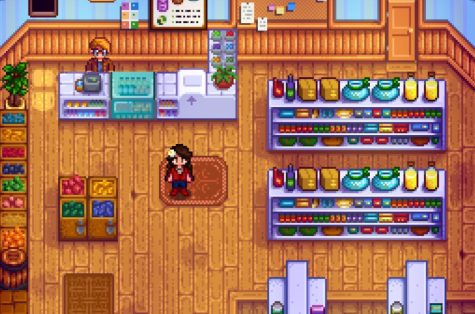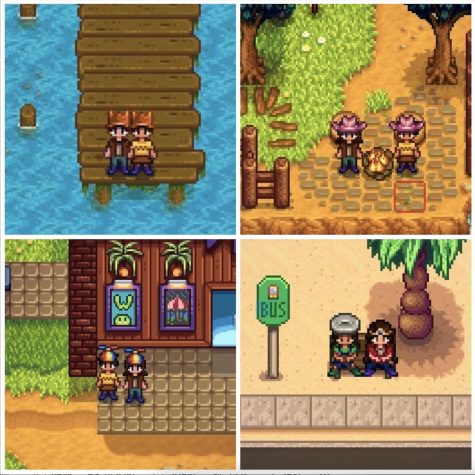Review: Stardew Valley captures hearts with its charming simplicity and captivating world-building
Stardew Valley is a popular role-playing game designed by ConcernedApe. It is known for its simple yet appealing pixelated 2D style.
Released on February 26, 2016, Stardew Valley is widely known for its pixelated 2D style which pays homage to its video game predecessors. While pixel art is known for being simple, Stardew Valley manages to create a complex storyline as well as captivating landscapes. The game’s developer ConcernedApe (Eric Barone) was directly inspired by the HarvestMoon series which had a similar concept.
Stardew Valley opens with a cutscene of one final interaction between you and your dying grandfather, who leaves you with some parting words of wisdom and an envelope that he tells you to save for a later time. Fast forward, you are a worker for the mass-corporation JojaMart but are unhappy with your job and monotonous life in the city. Coincidentally, you remember the sealed envelope your grandfather gave you before he passed and decide to open it. The envelope contains a letter and the deed to a farm located in Stardew Valley. You take a chance and leave behind your life in the city for the exciting unknown that awaits you.

Stardew Valley. An escape from the fast-paced life of the city. You are immediately handed the task of running a farm, but it is soon clear that this game is all about what you can do and what you wish to do. There are no set rules or a “correct” way of playing the game. You might want to focus on cultivating a profitable farm with the seasonal seeds provided at Pierre’s General Store. If you don’t like farming, you can explore the mines and improve your monster-fighting skills. Maybe your niche is fishing by the beach south of Pelican Town or decorating your farm. No matter what your interests are, Stardew Valley has something just for you.

While it may seem like a simple and repetitive farming game, Stardew Valley offers so much depth and a plotline that will keep you hooked. While getting accustomed to farm life, you are also handed the task of getting to know all the villagers in the quaint town. It is a goal to increase friendship points with the villagers and give them gifts based on their interests. Additionally, each character’s story is built with immense care. The game explores a wide range of mental health issues, such as PTSD, alcoholism, and depression, through its characters. Not only do they realistically represent mental health issues, but the game also emphasizes that no one in the mental health fight is alone, and your community is always there to help you. Without giving too much away, Stardew Valley’s characters are relatable and add so much depth to the plotline of the game.
Of course, with all video games, there are flaws, and Stardew Valley is no exception. In my opinion, I feel Stardew Valley needs more diversity within its villager and NPC population. While Stardew Valley gives options to date and marry villagers of any gender, it lacks racial diversity. Out of the 40-ish characters in the game, Demetrius, the town’s scientist, and his daughter, Maru, are the only non-white characters. People of other races lack representation, and I think having a more diverse community is extremely important and something ConcernedApe should consider.

When asked if I would recommend this game to others, I would undoubtedly say yes. From its stunning graphics to its incredible soundtrack, you can easily get sucked into the enchanting, nostalgia-filled game for hours on end. The game values connection and an appreciation of simplicity, and these factors make it such an enjoyable game to play. If you are interested in taking a closer look at the game or are interested in playing it, it is available on Steam, Nintendo Switch, iOS, and other platforms.



Pixel Crafters • Mar 26, 2025 at 10:51 am
This review perfectly captures the charm of Stardew Valley! I appreciate how it highlights not just the gameplay, but also the emotional depth and representation in the story. Well-written and insightful!